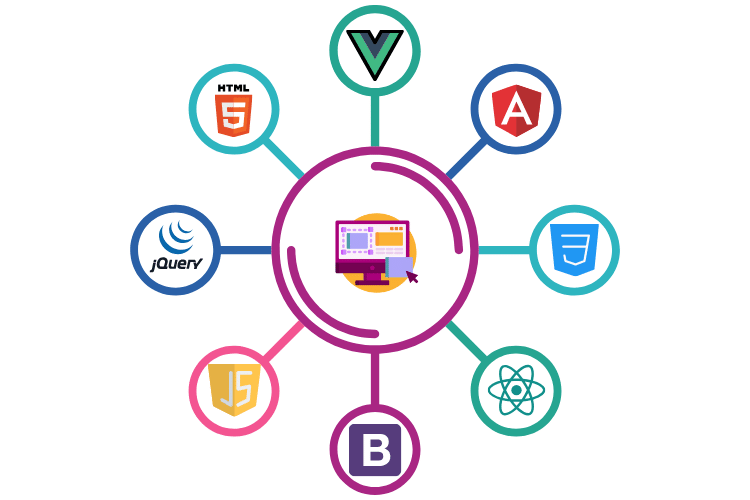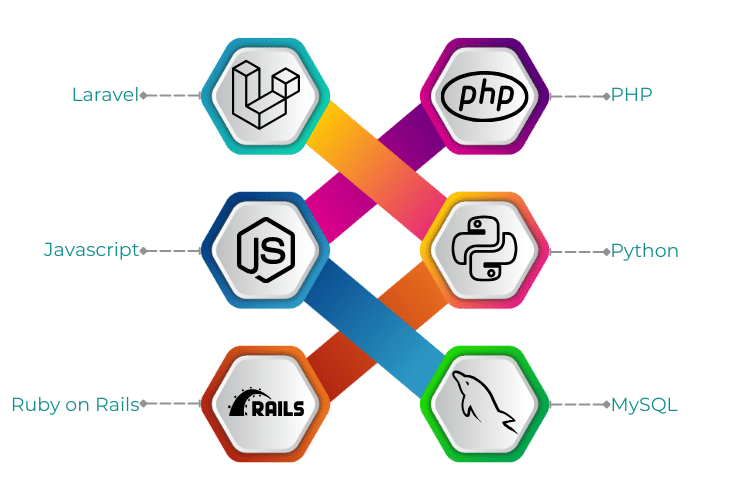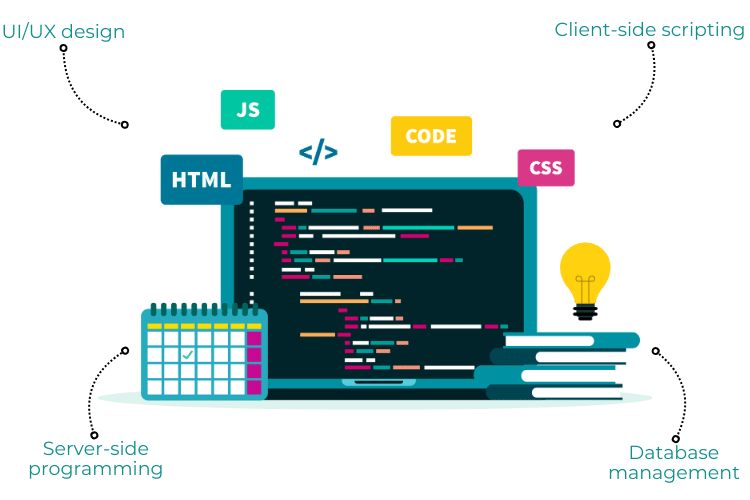Web Development
Full-stack web development refers to the practice of building web applications that encompass both the front end (client-side) and back end (server-side) components. A full-stack developer is proficient in both the front-end and back-end technologies, allowing them to work on all aspects of a web application from start to finish.
Front-end Development:
Front-end development involves creating the user interface and experience that users interact with directly in their web browsers. This includes designing and coding the visual elements of the website or web application, such as layout, navigation, and interactive features.
Key technologies and tools used in front-end development include:
- HTML (Hypertext Markup Language): Defines the structure and content of web pages.
- CSS (Cascading Style Sheets): Styles the HTML elements, controlling their appearance and layout.
- JavaScript: Adds interactivity and dynamic behavior to web pages, enabling features like animations, form validation, and asynchronous data loading.
- Front-end frameworks/libraries: Such as React.js, Angular, or Vue.js, which provide pre-built components and utilities to streamline development and enhance performance.

Back-end Development:
Back-end development involves building and maintaining the server-side logic and database interactions necessary for the functioning of the web application. This includes handling user authentication, processing data, managing server requests, and communicating with databases and other external services.
Key technologies and tools used in back-end development include:
- Programming languages: Such as JavaScript (Node.js), Python (Django, Flask), Ruby (Ruby on Rails), Java (Spring Boot), or PHP (Laravel).
- Web servers: Like Express.js (for Node.js), Flask (for Python), or Apache (with PHP).
- Databases: Such as MySQL, PostgreSQL, MongoDB, or SQLite for storing and retrieving data.
- APIs (Application Programming Interfaces): Used for integrating with external services or enabling communication between different parts of the application.

Full-stack developers are proficient in both front-end and back-end technologies, allowing them to seamlessly integrate the two and build fully functional web applications. They possess a broad skill set encompassing UI/UX design, client-side scripting, server-side programming, database management, and deployment.
In addition to technical skills, full-stack developers often have expertise in version control systems (e.g., Git), DevOps practices, and cloud services for deployment and hosting (e.g., AWS, Azure, Heroku).

Overall, full-stack web development offers the advantage of versatility and autonomy, as developers can work on all aspects of a project independently or collaborate with specialized team members to deliver robust, feature-rich web applications.
